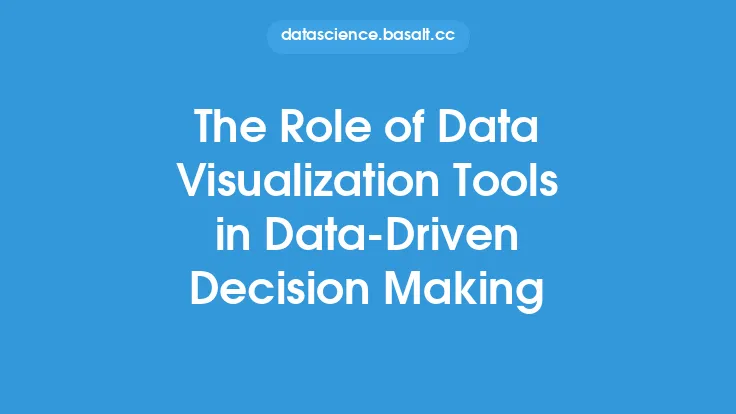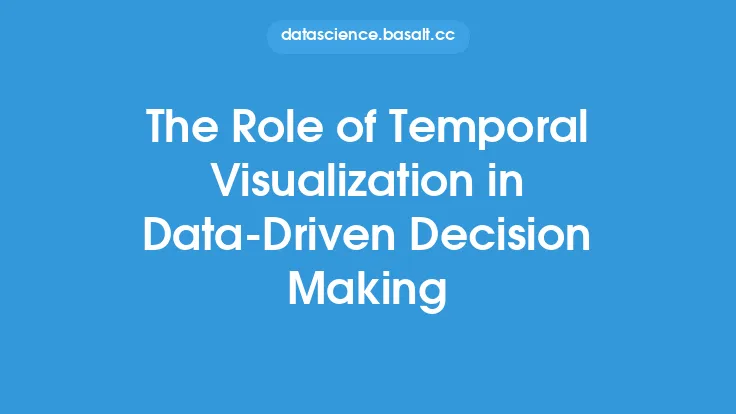Data storage plays a crucial role in the field of data analytics and visualization, as it provides the foundation for storing, managing, and retrieving large amounts of data. The ability to store and manage data effectively is essential for organizations to make informed decisions, identify trends, and gain insights into their operations. In this article, we will explore the role of data storage in data analytics and visualization, and discuss the various technologies and techniques used to support these processes.
Introduction to Data Storage
Data storage refers to the process of storing and managing data in a way that allows for efficient retrieval and analysis. This can include a range of technologies, such as hard disk drives, solid-state drives, and flash storage, as well as cloud-based storage solutions. The choice of data storage technology will depend on the specific needs of the organization, including the type and amount of data being stored, as well as the required levels of performance, scalability, and security.
Data Storage and Data Analytics
Data analytics is the process of examining data sets to draw conclusions about the information they contain. This can include a range of techniques, such as data mining, predictive analytics, and statistical analysis. Data storage plays a critical role in data analytics, as it provides the foundation for storing and managing the large amounts of data required for analysis. The ability to store and manage data effectively is essential for organizations to gain insights into their operations, identify trends, and make informed decisions.
Data Storage and Data Visualization
Data visualization is the process of using graphical representations to communicate information and insights gained from data analysis. This can include a range of techniques, such as charts, graphs, and maps, as well as more advanced techniques, such as interactive dashboards and virtual reality. Data storage plays a critical role in data visualization, as it provides the foundation for storing and managing the data used to create visualizations. The ability to store and manage data effectively is essential for organizations to create accurate and informative visualizations, and to gain insights into their operations.
Data Storage Technologies
There are a range of data storage technologies available, each with its own strengths and weaknesses. These include:
- Relational databases: These are traditional databases that use a fixed schema to store data, and are well-suited for storing structured data.
- NoSQL databases: These are databases that do not use a fixed schema, and are well-suited for storing unstructured or semi-structured data.
- Data warehouses: These are centralized repositories that store data from a range of sources, and are well-suited for data analytics and business intelligence.
- Data lakes: These are centralized repositories that store raw, unprocessed data, and are well-suited for big data analytics and machine learning.
- Cloud-based storage: This refers to the use of cloud-based services, such as Amazon S3 or Google Cloud Storage, to store and manage data.
Data Storage Considerations
When selecting a data storage technology, there are a range of considerations that must be taken into account. These include:
- Scalability: The ability of the storage technology to handle increasing amounts of data and user activity.
- Performance: The speed and efficiency of the storage technology, including the time it takes to retrieve and store data.
- Security: The ability of the storage technology to protect data from unauthorized access and other security threats.
- Cost: The total cost of ownership of the storage technology, including the cost of hardware, software, and maintenance.
- Data governance: The ability of the storage technology to support data governance policies and procedures, including data quality, data lineage, and data compliance.
Data Storage and Big Data
Big data refers to the large amounts of structured and unstructured data that organizations generate and collect. Data storage plays a critical role in big data, as it provides the foundation for storing and managing the large amounts of data required for analysis. The ability to store and manage data effectively is essential for organizations to gain insights into their operations, identify trends, and make informed decisions. Big data storage technologies, such as Hadoop and Spark, are designed to handle the large amounts of data generated by big data applications, and provide a range of tools and techniques for data processing and analysis.
Data Storage and Artificial Intelligence
Artificial intelligence (AI) refers to the use of machine learning and other techniques to analyze and interpret data. Data storage plays a critical role in AI, as it provides the foundation for storing and managing the large amounts of data required for training and testing AI models. The ability to store and manage data effectively is essential for organizations to develop and deploy AI applications, and to gain insights into their operations. AI storage technologies, such as graph databases and in-memory databases, are designed to handle the large amounts of data generated by AI applications, and provide a range of tools and techniques for data processing and analysis.
Conclusion
In conclusion, data storage plays a critical role in data analytics and visualization, as it provides the foundation for storing and managing the large amounts of data required for analysis and visualization. The ability to store and manage data effectively is essential for organizations to gain insights into their operations, identify trends, and make informed decisions. By selecting the right data storage technology, and considering factors such as scalability, performance, security, cost, and data governance, organizations can ensure that their data storage infrastructure is able to support their data analytics and visualization needs, both now and in the future.





